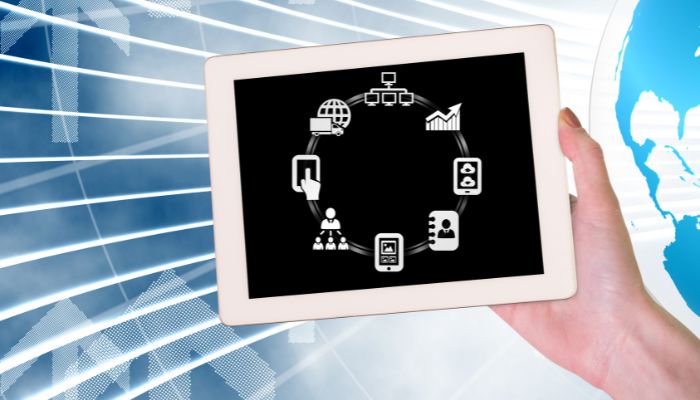The field of Learning and Development isn’t untouched by the advanced technological changes happening around it. Artificial intelligence (AI) has taken over to provide cognizance based on enormous amounts of data it has collected and analyzed, which will facilitate the creation of customized learning programs at an accelerated rate.
Few thinkers believe that the function of L&D and HR is to understand what employees’ jobs are, learn about the latest tools and techniques to drive learning and performance, then apply them to work in a modern, relevant and cost-effective way.
The challenge posed to L&D is to leverage the acumen of the data to drive business value. Considering its significance and growth, employers need to focus on making the best use of AI in L&D.
From online shopping’s search and recommendation functions to voice-to-text in mobile usage, or AI-powered personal assistants like Alexa or Siri, these new mechanics touch our work and personal lives almost everyday. One of the most important cogitations in choosing an AI solution will be the level of analytics it can deliver.
Success mantra for personalized learning in Rob May’s words is understanding how and when the learning is most effective. However, he cautions – leaders in L&D and HR must remember that technology should never replace human interaction.
The burning discussion amongst AI people is about replacing routine and predictable work. Physical actions to be performed by humans can be replaced by robotics but the challenge is how to make it smarter by using AI. While AI is being put to use, humans will still be doing more complex parts of the role, working alongside automated systems. Few ideas that ignite brainstorming around AI could be related to the identification of the L&D process that can be automated, the use of chatbots, usage of recommendation and adaptive learning systems and becoming more data driven.
There will be changes in the way L&D works. There are many opportunities for the proliferation of L&D work, for instance augmenting the design of learning strategies. Few examples of use of AI into automation of learning experiences are :-
Chatbots
Chatbot applications streamline interactions between people and services, enhancing customer experience. They offer companies new opportunities to improve the customer engagement process and operational efficiency by reducing the cost of customer service. Use of chatbots is exploding. Chatbots are powerful tools for performance support, where employees can ask the bot questions and it returns possible answers. Chatbots could also be used for building semi-automated coaching systems common in help desks.
Depending on the use and desired results, the combination of different AI forms such as natural language processing, machine learning and semantic understanding may be the best option.
Recommendation engines and learning
Experience with search engines are common. Perhaps what is uncommon is knowledge that they are being driven by machine learning – for example, suggestions by Amazon and Netflix. This technology looks for patterns. Recommendation features are starting to be noticed in learning management systems too. They are based on data from job roles and an employee’s past completions.
Scope needs to be extended to focus on recommendations being based on employees’ activity in learning experiences or actual on-the-job performance.
Predictive machine learning
Learning needs to pace up with data driven businesses. Biggest challenge for L&D is that they are often only measuring the amount of learning e.g. time in a course or activity inside of learning experiences, not the impact and change post learning.
L&D people have started using the data driven learning into performance and recruitment. Recruitment is one area of HR where machine learning is rapidly being applied. It is possible to survey applicants and existing employees to build a profile and bring in simple KPIs on. For instance, how long the employee has been employed or their on-the-job performance. The machine learning system can build models based on the data and can predict if the person fits the profile of being ‘a successful employee’.
xAPI (Experience API) is one of the key technologies to have set this new approach. Mobile learning, simulations, virtual worlds, serious games, real-world activities, experiential learning, social learning, offline learning, and collaborative learning are just some of the things that can now be recognized and communicated well with the Experience API. It means that data beyond what can be captured in an LMS can be added. xAPI data doesn’t have to be just learning data – it can be performance data as well, e.g. sales or billable hours.
Intelligent Adaptive Learning Systems
The next level of personalization is adaptive learning, where an employee’s past interaction directs the actual learning experience. The provocation here is not the technology but being able to produce all the content for the different possibilities. The concept is not new but the distribution channels have been multiplied and refined in recent years. Being able to follow a personalized learning path in real time, the benefits include increased motivation, optimizing learning time and reinforcing the learning process for the learners or employees and determining training needs, evaluating the impact of its investment in training and consolidation of a culture of development for the employers.
AI is colossal and many areas are incipient or theoretical, the advancements are fast and ubiquitous – virtual mentoring, advanced analytics being the recent soaring ones. Imagine a future where AI instructional designers are taking charge of virtual classrooms, powered by real-time case studies and simulations! AI is truly an incredible tool for employee engagement, workforce productivity, and eventually business profitability.






